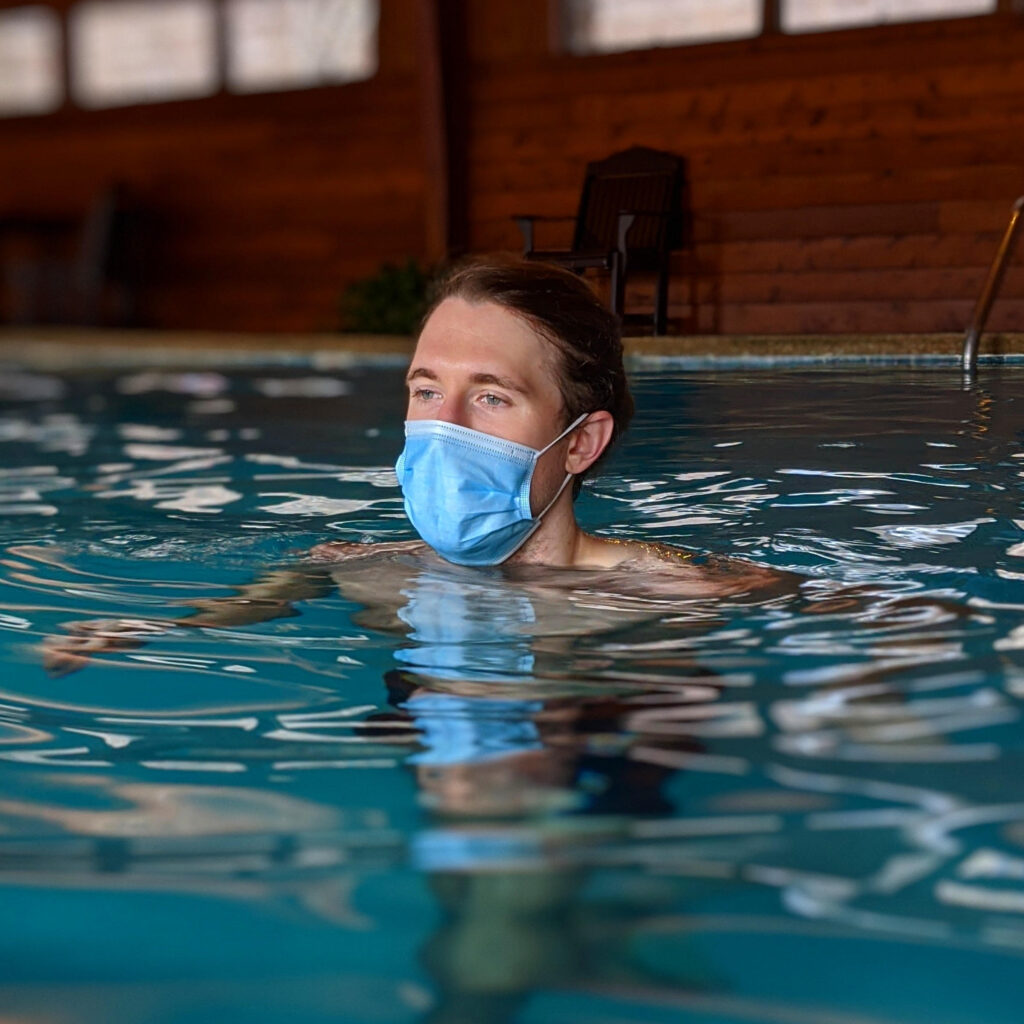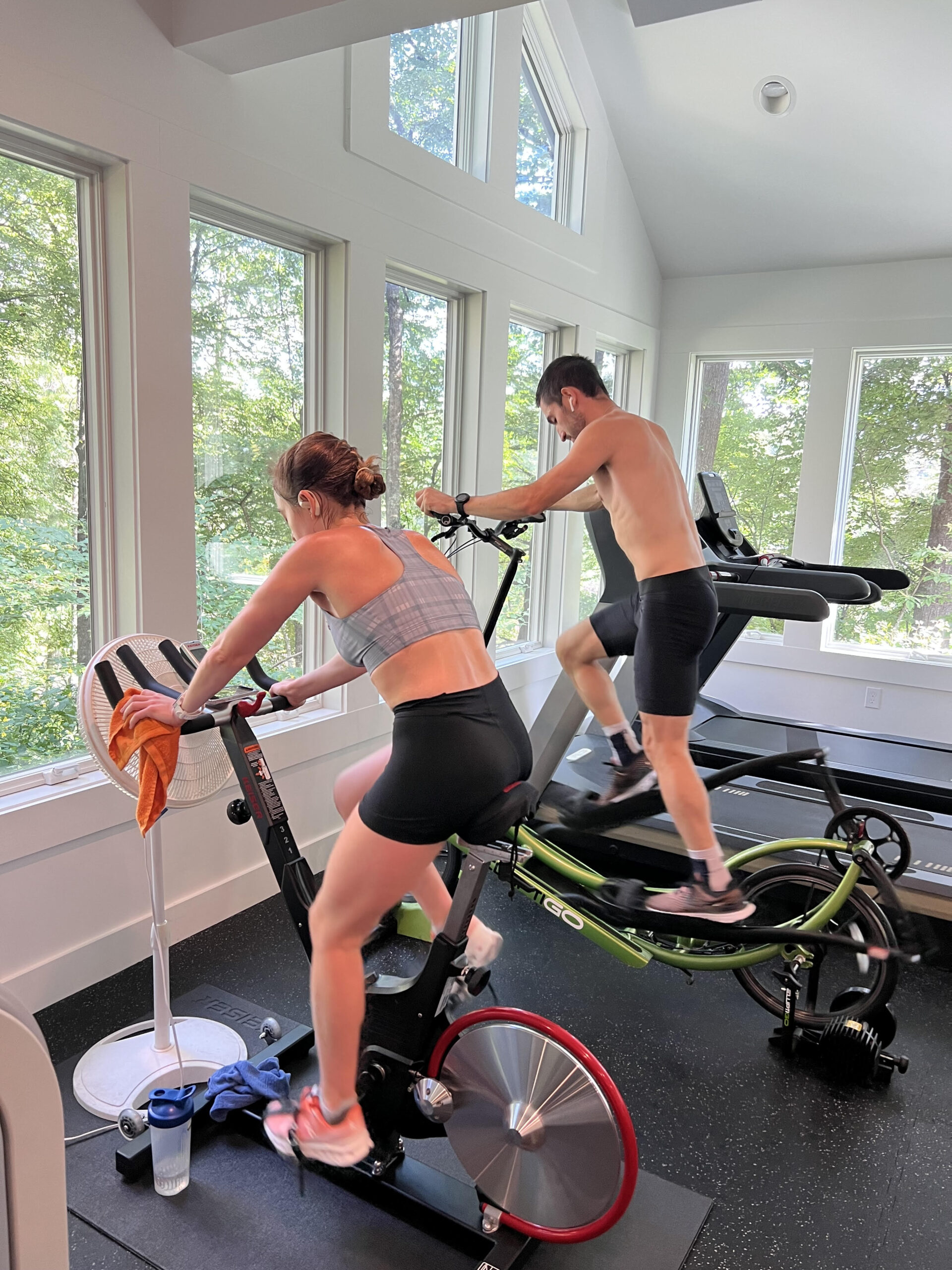One of my favorite stories of cross training for runners stories is of the legendary Joan Benoit Samuelson working out on a hand bike the day after having knee surgery, 17 days before the 1984 Olympic Trials.
Joan is most famous for winning the inaugural women’s marathon gold medal later that summer in Los Angeles. But due to that surgery she was probably less sure about making the Olympic team that year than she was about winning the gold.
Bob Kempainen’s story is a remarkable one of training almost exclusively on a Nordic trainer and in the pool in his lead-up to winning the 1996 Olympic Marathon Trials. These two Olympic stories highlight the value of using non-running exercise to improve or maintain fitness while injured. However, there are other times cross training may play a constructive role in your training and the modality you choose can have a big impact on the benefits you derive.
Aerobic Benefits
There are numerous benefits to cross training for runners, most notably, improving your aerobic capacity. The aerobic development you achieve through your long runs, tempo runs, and easy runs is done through improving your cardiovascular strength, lung capacity, and capillary bed density.
Generally, your lungs and heart don’t know the difference between running and other aerobic exercise. This is why cross training can be such a powerful tool for developing aerobic fitness. However, it’s important to remember your muscles do know the difference. And for that reason a healthy runner shouldn’t look to replace running with cross training. The specificity of the activity is important and nothing will improve your running performances like running.
Implementation of Cross Training for Runners
Incorporating cross training into your running routine can be beneficial to building your fitness whether you’re injured or simply looking for a different activity to keep you motivated and engaged. Injury is the most common reason runners utilize non-running exercise. But many athletes include cross training as part of their regular training routine.
An important thing to remember when incorporating cross training for runners into your training is to make sure it isn’t detracting from your running. Typically, this means avoiding a hard cross training workout the day before a hard running workout or long run. The best way to incorporate cross training in your training is on the day after a hard running workout or long run. Or if you’re doing a second session of the day after a hard workout, cross training is a perfect option.
If you’re training hard for a specific goal, you’re healthy, and running at your maximum volume, cross training should be done at a moderate intensity. This helps facilitate recovery while still providing aerobic benefits.
Execution

Deep-water pool running is a cross training modality that is uniquely suited to facilitate recovery and provide running specific benefits. The hydrostatic pressure of the water helps promote blood flow throughout the body. This can help relieve the heavy legged feeling coming off harder workouts. Additionally, when performed correctly, pool running is the a highly specific cross training tool. The key difference between deep-water pool running and something like cycling is you are able to mimic proper running technique. This can have a positive impact on your running form when you’re back on land.
While it is possible to have good technique in the pool without a flotation belt, it is incredibly challenging. And because proper technique is critical to maximizing the benefits you should use a floatation belt. In water deep enough you can’t touch the bottom, remain tall with your shoulders directly above your hips and ankles.
The most common mistake is hunching your shoulders forward and pushing your hips back. The misconception that you’re working harder if you’re moving faster leads to this improper technique. With your hips back and shoulders forward you will cover more distance, but the hybrid run/swim motion that results doesn’t allow you maximize the benefits. With proper form you will move forward very slowly, but get a better running specific workout.
Perfect Running Form
Proper form is what sets pool running apart from other types of cross training. Stay tall in the water, drive your arms front to back, and pump your knees up and down. Because you have nothing to push off of in the water, the only difference with pool running is your feet won’t come up behind you. Otherwise perfect running form is the goal.
Your knees should be driving up and down in front of your body with your feet “landing” directly under your hips. If you have a lower leg injury be cautious with pool running as the force of the water on the bottom of your foot can place stress on your calves and Achilles. If you notice tightness or pain an ElliptiGO or other modality would be a better option.
ElliptiGO

Speaking of running specific cross training, the ElliptiGO is a tool we utilize heavily at ZAP. The ElliptiGO functions similarly to an elliptical trainer, except you can take it out on the road. And the key differences that make it such a better tool than the elliptical are in the design.
The ElliptiGO is designed with a much narrower stance than a traditional ElliptiGO, making the foot placement much more natural. The gliding motion is more running specific, with more of the motion coming behind your hips. This makes the muscular recruitment much more running specific, engaging the glutes and hamstrings more. The stride length is longer and much more natural than a traditional elliptical.
Additionally, due to it’s vertical, weight-bearing riding position it’s much easier to elevate your heart rate than on a bicycle. And overall, the specific nature of the exercise blows the bike out of the water. Many of our athletes regularly use the ElliptiGO as part of their training, both when healthy or when recovering from an injury.
Workout Structure
In the pool, structure your workouts using high intensity intervals with short recovery. Because of the hydrostatic pressure it is difficult to elevate your heart rate in the pool. Therefore, using intense intervals will provide the best workout.
The intervals should be short so you can stay focused on proper technique and maintaining high intensity. The rest should be very short because your heart rate will drop quickly in the water. But your muscles still need some recovery from pushing all that water around.
A typical pool workout could consist of intervals ranging from 15 seconds to 3 minutes with most of the intervals at 60 seconds or less. Because most pools have a big 60 second clock on the deck 60 second based workouts fit wonderfully. For example: 30 seconds hard followed by 30 seconds easy, 40 seconds hard followed by 20 seconds easy, 50 seconds hard followed by 10 seconds easy.
On the ElliptiGO you have much more flexibility with your workouts. The weight bearing nature of the ElliptiGO allows you to implement workouts the same way you would a running workout. Or you can just get on and ride to get great aerobic benefits.
Whether you’re healthy and looking to add some variety to your routine or coming back from an injury, cross training for runners is an excellent way to build and maintain fitness. And when done correctly, can even improve your running form.
Interested in Learning more about ZAP’s 1-on-1 Coaching Services? Click Here.